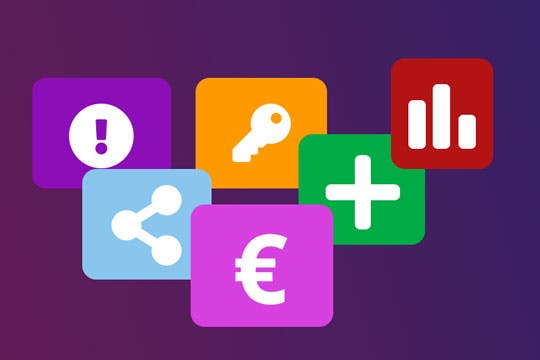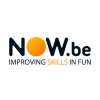Learning Canvas
Following the famous Business Model Canvas, the Learning Canvas offers a visual support to facilitate the conception of a training session. This tool is particularly interesting for facilitating group reflection, building a common vision and communicating the essential elements to the training stakeholders.
This model was created by our partner NOW.be.
Voorafgaande vereisten
Bring together participants with a complementary vision of the various aspects of the training project: operational sponsor, project manager, training consultant, digital developer, and a group representing the future participants can be brought together.
Prepare a board activity (create the 11 categories) or import our ready-to-use Beekast canvas.
It can be interesting to write down an initial card in each category to detail what is expected (by coloring them in the same way).
Instelling van de activiteit Prikbord
- Activity format: Direct
- Voting: with points or likes
- Categories: 11 categories corresponding to the boxes on the Learning Canvas
Verloop
Presentation
Explain to the group the purpose of the session: to frame a training project or session (or module) by gathering the relevant key information.
Explain the method you prefer, depending on the time available and the size of the group (individual steps, sub-group, plenary). The emergence of ideas in collective intelligence can be conducted using virtual post-it notes following the Canvas plan or in a "world café" workshop mode (with time for sub-groups and feedback).
Give a reflection plan with inspiring questions corresponding to the 11 categories:
- Operational goals: What value (visible and measurable results) do we bring to the participants or their clients? What aspects of their work do they want to improve? What problems or difficulties do they want to avoid? How will you know that the training is a success?
- Training goals: What knowledge (theoretical knowledge), know-how (practical operational behavior, gestures and postures), interpersonal skills (awareness, attitudes, relational and emotional behavior) should be developed?
- Audience profile: Who are the targeted participants? Stakes, level, number, availability, digital skills, etc. Will the group be homogeneous or heterogeneous? What is the existing knowledge of my audience on the subject? What is their hierarchical position in the organization?
- Contributors: Which people should be involved? Who will you rely on (suppliers, internal/external providers)? What key resources do they have? How can they complete the project?
- Environment: What are the logistical, material, technological, digital (software), social and cultural aspects of the company to take into account?
- Constraints: What are the constraints to consider (premises, security, disability, time milestones such as durations, rhythms, etc.)?
- Prerequisites / other: What knowledge, skills, training or technical means are required to take full advantage of the training? Other miscellaneous points or ideas that do not fit into any of the boxes in the template?
- Resources and content: What resources do you need (material, immaterial, human, or financial)? What teaching materials should be used to promote the understanding and memorisation of key concepts and messages (facilitator's guide, slide show, participant support, workbook, collaborative digital wall, etc.)?
- Training strategy: What methods, modalities (face-to-face, online, mixed, etc.) and effective training scenarios should I choose? What types of devices will I put in place to encourage ownership and commitment over time? What type of relationship will I have with my audience? How will the follow-up be organised before/after the training, and in what form (pre-communication, coaching, group feedback, forum, etc.)?
- Activities: What types of activities (cf. HADoC Now.be model) and pedagogical techniques should be used to achieve the training goals (role-playing, simulations, case studies, presentations, practical exercises, etc.) ? What are the pedagogical and collective intelligence activities to increase motivation and enthusiasm in training?
- Evaluation: What types of evaluation should be implemented in line with the goals and constraints (diagnostic, formative, summative)? How can you apply QQOQPC questioning to the evaluation? (who evaluates what, when, for whom, how and for what purpose)? What criteria will be used to evaluate the quality and effectiveness of the training? What tools will I use (survey, focus groups, etc.)?
Exploration
The workshop proceeds step by step. For each step, the facilitator briefly explains the content of the step before allowing a few minutes for the participants to express their ideas in the corresponding category.
Suggest an individual rereading of the whole table and a vote on the most appreciated ideas if time permits.
Discussion
This should be followed by an interactive discussion, category after category. Try to keep the discussion short, or even limit the amount of time (e.g. 30' per person) depending on the time available.
If there is a disagreement or a split opinion on an idea, add an indication that it will have to be discussed again or explored further.
Summary
At the end of the activity, identify a leader for each key idea that requires further discussion. Record the action plan items as actions or decisions so that you can find them in your minutes and follow up on them.
Suggesties en variaties
This activity can be done category by category in order from 1 to 11 or in specialized teams depending on the skills of each. In a large group of contributors, for example, divide it into several teams of 3-4 participants.
Individually, when you are thinking about a category of the project that you are not familiar with, look for inspiration by consulting specialized books and websites via an internet search.
Deze sjablonen kunnen u interesseren

The Circle of Influence

Innovatiematrix


 Beekast
Beekast